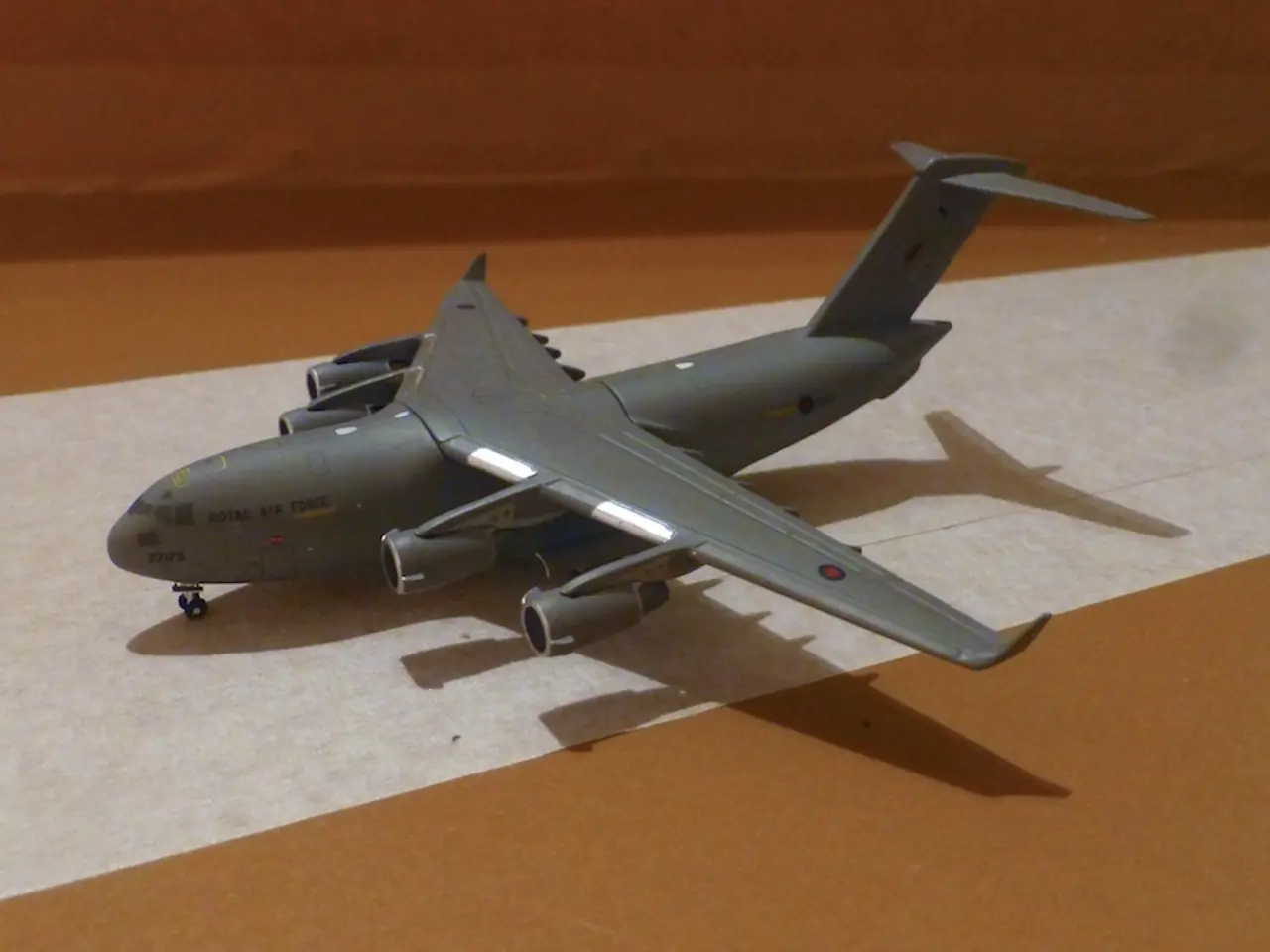Ascending towards Aviation's Tomorrow
Airbus, a leading aircraft manufacturer, is pushing the boundaries of aviation technology with its latest developments focused on creating more environmentally responsible and efficient aircraft. The company's flagship programme, the Wing of Tomorrow, is dedicated to improving new wing manufacturing and assembly technologies, as well as advancing aerodynamic design.
One of the most exciting innovations is the development of a new single-aisle aircraft with advanced aerodynamic and biomimicry wings. These wings are designed to generate more lift and reduce fuel consumption, key factors in reducing an aircraft's carbon footprint. One possibility for a new wing is a folding wing for increased lift and reduced drag.
In the realm of wing design, Airbus is making strides with innovations such as outer wing boxes made of carbon fibre reinforced plastic (CFRP) using advanced manufacturing like liquid resin infusion and thermoplastic in-situ consolidation. These techniques reduce weight by about 5.6% compared to conventional structures. Airbus is also exploring aeroelastic hinges that allow the wing to dynamically change shape in flight to optimize lift and drag performance.
The propulsion system is another area where Airbus is making significant strides. The company uses cutting-edge engines like the Pratt & Whitney PW1500G geared turbofan on the A220, which achieves significant fuel efficiency gains. The high bypass ratio (12:1) of these turbofans represents a major leap in next-generation engine design focused on sustainability and performance improvement.
Electrification and hybridisation are also key components of Airbus's future plans. The company is integrating High Voltage Direct Current (HVDC) electromechanical surface actuation systems in control surfaces like ailerons, spoilers, and winglet tabs. This electrification supports more efficient actuation systems and is a step toward hybrid-electric aircraft designs that reduce emissions and improve flight control accuracy.
The use of advanced composite materials, primarily CFRP, cures using out-of-autoclave processes, enables high structural integration and weight reduction. These materials contribute to lower CO2 and NOx emissions by reducing aircraft weight and enhancing aerodynamic efficiency. Airbus also employs thermoplastics for upper skins with integrated stringers, further optimizing structural performance and manufacturing efficiency.
Airbus is also researching how biomass composites and thermoplastics could replace CFRP in the aircraft manufacturing process. The company is validating new flight control systems and embedded satellite communication antennas that expand flight envelope performance safely and reliably. Ground-based demonstration rigs show integration of systems for electrification and structural components, reinforcing robustness and safety in innovative aircraft architectures.
The next generation of Airbus aircraft will be compatible with up to 100% sustainable aviation fuel (SAF), which can reduce lifecycle carbon emissions up to 80% compared to traditional jet fuel. Airbus is adopting a holistic approach to integrating smart automation not only within the aircraft but also in ground operations and maintenance.
The aviation industry has progressed through various models of engines over the decades, with the turbofan engine offering improved fuel efficiency and less noise, becoming the standard in modern commercial aviation. Airbus is working on the Revolutionary Innovation for Sustainable Engines (RISE) open fan engine demonstrator, aiming to reduce fuel consumption and CO emissions by 20% compared to today's most efficient single-aisle engines.
The new aircraft will be built with materials that are lighter yet stronger, making it more durable and easier to handle. The Multifunctional Fuselage Demonstrator (MFFD) achieved its weight-saving target at a neutral cost and proved greater manufacturing efficiency using carbon fibre-reinforced thermoplastic polymer composites (CFRTP).
The future systems will be highly connected and automated, powered by advanced computer platforms, allowing for automatic installation, updates, and modifications of system applications. The new aircraft's engines will consume 20% less fuel than current models, making air travel more decarbonised and cost-effective.
Airbus is exploring the potential of solid-state batteries for the next generation of aircraft. The company is designing a common digital platform for a future next-generation single aisle, ensuring safer and more efficient operations. With these innovations, Airbus is setting a new standard for future regional and larger aircraft that prioritize environmentally responsible operations with substantially reduced noise, CO2, and NOx emissions while enhancing flight performance and operational efficiency.
[1] Airbus (2022). Airbus unveils its vision for the future of flight. Retrieved from https://www.airbus.com/newsroom/press-releases/en/2022/03/airbus-unveils-its-vision-for-the-future-of-flight.html
[2] Airbus (2022). Airbus presents its vision for the future of flight at the Farnborough International Airshow. Retrieved from https://www.airbus.com/newsroom/press-releases/en/2022/07/airbus-presents-its-vision-for-the-future-of-flight-at-the-farnborough-international-airshow.html
[3] Airbus (2022). Airbus to develop a new single-aisle aircraft with advanced aerodynamic and biomimicry wings. Retrieved from https://www.airbus.com/newsroom/press-releases/en/2022/07/airbus-to-develop-a-new-single-aisle-aircraft-with-advanced-aerodynamic-and-biomimicry-wings.html
[4] Airbus (2022). Airbus unveils its new Wing Technology Development Centre at Filton. Retrieved from https://www.airbus.com/newsroom/press-releases/en/2022/01/airbus-unveils-its-new-wing-technology-development-centre-at-filton.html
[5] Airbus (2022). Airbus showcases its commitment to sustainability at the 2022 Paris Air Show. Retrieved from https://www.airbus.com/newsroom/press-releases/en/2022/06/airbus-showcases-its-commitment-to-sustainability-at-the-2022-paris-air-show.html
- Airbus's new single-aisle aircraft, with advanced aerodynamic and biomimicry wings, is set to revolutionize the aerospace industry, focusing on generating more lift, reducing fuel consumption, and eventually minimizing the carbon footprint, all key aspects in adopting environmentally responsible practices.
- In the finance sector, Airbus is investing significantly in technological advancements, aiming to optimize the aerodynamic design and propulsion systems of its aircraft, which are crucial in the pursuit of improved fuel efficiency and reduced emissions, thereby aligning with sustainable finance principles within the industry.








